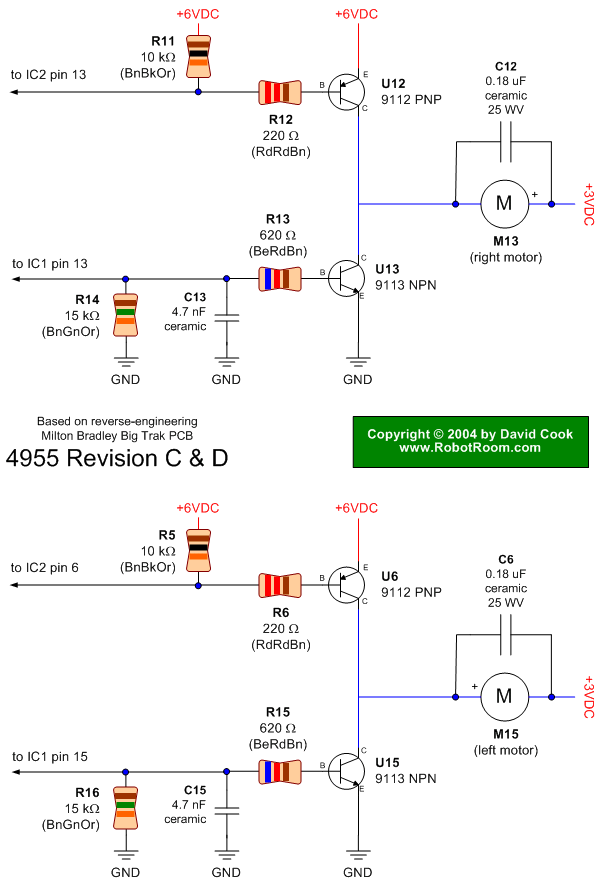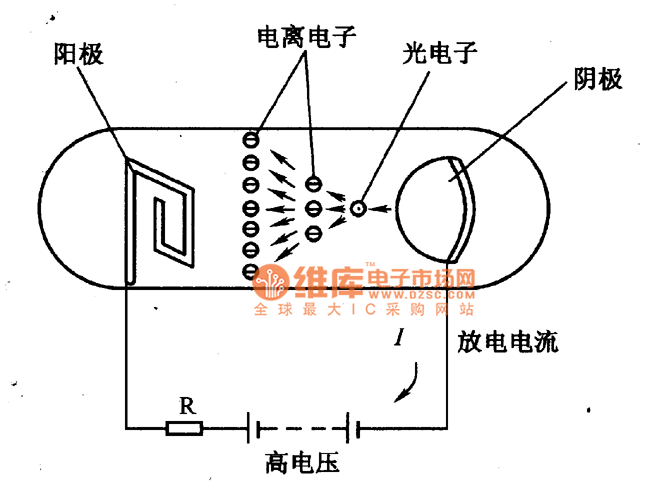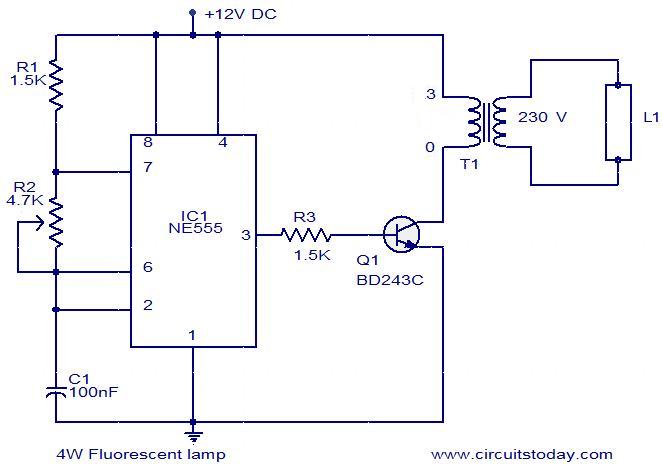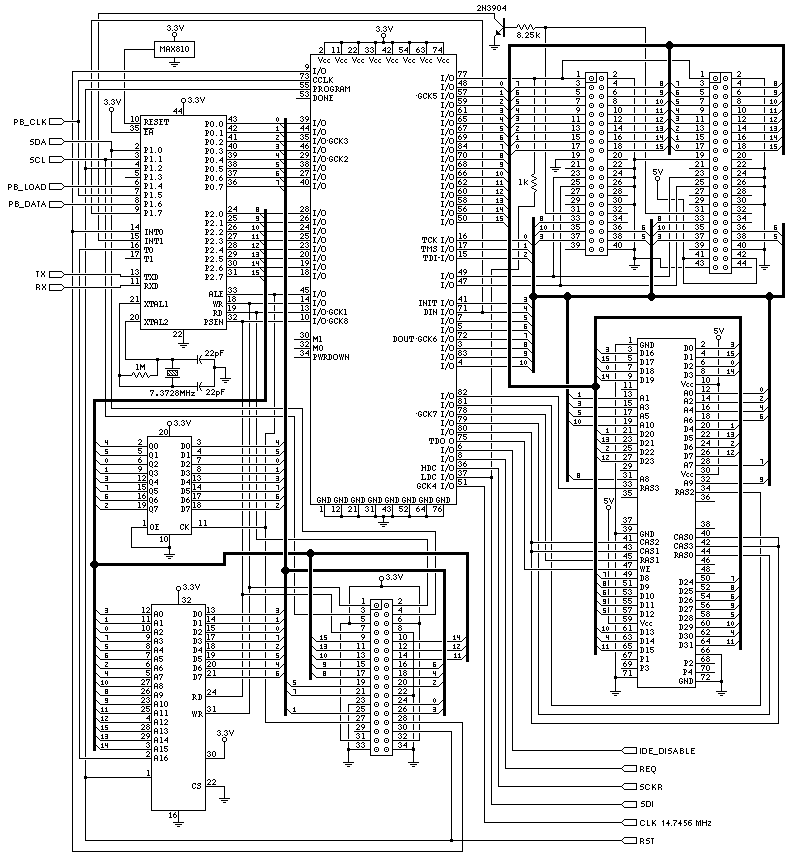
Big Trak Motor Driver Schematic

Schematic of Big Trak's motor driver circuit. The toy includes 9112 and 9113 transistors (and sometimes 2N6715) because the 75494 chip cannot supply enough current to run the Big Trak's motors by itself.
The motor driver circuit for the Big Trak toy is designed to facilitate the control of the motors that drive its movement. The primary component responsible for motor control is the 75494 integrated circuit, which functions as a quad latch. However, due to its limited current output capabilities, additional transistors are employed to enhance the circuit's performance.
The 9112 and 9113 transistors are typically used in this configuration. These transistors serve as switches, allowing the 75494 chip to control the larger currents required by the motors without being overloaded. In some instances, the 2N6715 transistor may also be utilized, providing an alternative option that can handle higher current levels, thus ensuring reliable motor operation.
The circuit operates by sending control signals from the 75494 to the base of the transistors, which in turn allows for the flow of current from the power supply to the motors. The transistors are arranged in a way that they can control both the forward and reverse rotation of the motors, enabling the toy to move in different directions.
This motor driver circuit is crucial for the overall functionality of the Big Trak toy, as it ensures that the motors receive adequate power while maintaining the integrity of the control signals from the 75494 chip. Proper thermal management and component selection are essential to prevent overheating and ensure long-term reliability of the circuit.Schematic of Big Trak`s motor driver circuit. The toy includes 9112 and 9113 transistors (and sometimes 2N6715) because the 75494 chip can`t supply enough current to run the Big Trak`s motors by itself.. 🔗 External reference
The motor driver circuit for the Big Trak toy is designed to facilitate the control of the motors that drive its movement. The primary component responsible for motor control is the 75494 integrated circuit, which functions as a quad latch. However, due to its limited current output capabilities, additional transistors are employed to enhance the circuit's performance.
The 9112 and 9113 transistors are typically used in this configuration. These transistors serve as switches, allowing the 75494 chip to control the larger currents required by the motors without being overloaded. In some instances, the 2N6715 transistor may also be utilized, providing an alternative option that can handle higher current levels, thus ensuring reliable motor operation.
The circuit operates by sending control signals from the 75494 to the base of the transistors, which in turn allows for the flow of current from the power supply to the motors. The transistors are arranged in a way that they can control both the forward and reverse rotation of the motors, enabling the toy to move in different directions.
This motor driver circuit is crucial for the overall functionality of the Big Trak toy, as it ensures that the motors receive adequate power while maintaining the integrity of the control signals from the 75494 chip. Proper thermal management and component selection are essential to prevent overheating and ensure long-term reliability of the circuit.Schematic of Big Trak`s motor driver circuit. The toy includes 9112 and 9113 transistors (and sometimes 2N6715) because the 75494 chip can`t supply enough current to run the Big Trak`s motors by itself.. 🔗 External reference


%2Bdecoder%2BCircuit%2Bschematic%2Busing%2BM8870.png)


